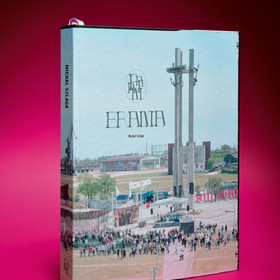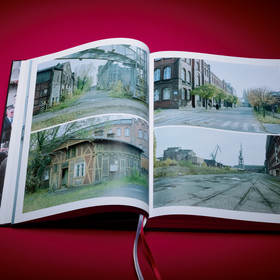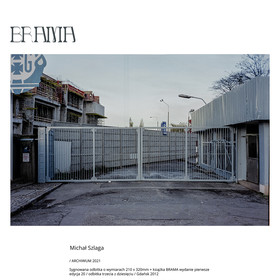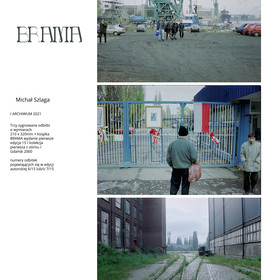04.03.2021
Michał Szlaga. The Gate
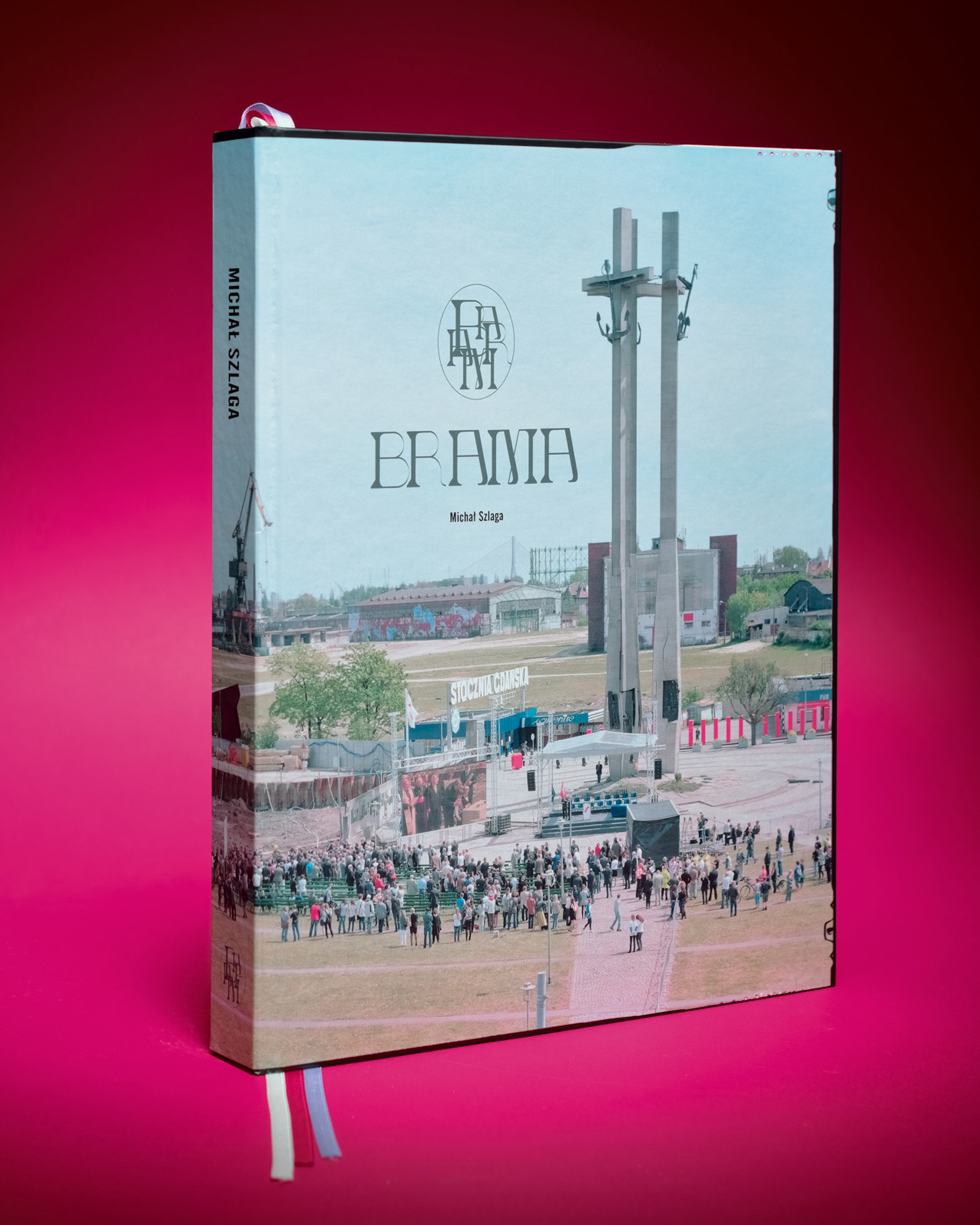
INFORMATION ABOUT THE BOOK
The Gate
245×325mm, hardcover, 392 pages, 1,237 photographs
Photographs and concept: Michał Szlaga
Selection and sequencing of images: Michał Szlaga, Chmielarz Sylwia
Graphic design and typesetting: Chmielarz Sylwia
Print run:
English edition (The Gate): 300 copies
Polish edition (Brama): 700 copies
Publishers:
Oficyna Gdańska (ISBN 978-83-64180-57-6)
National Museum in Gdańsk (ISBN 978-83-66433-11-3)
Michał Szlaga’s new photobook The Gate (Polish: Brama) is now available for preorder in our IFF shop.
The Gate tells the story of a square in Gdańsk, Poland across which the wind of history continuously blows. This historical current can be felt throughout Szlaga’s album, as the author confronts some of the most contentious issues dividing contemporary Polish society. Szlaga does not take an explicit stance in these disputes over ideologies and worldviews. He observes events with a reporter’s objectivity. However, he is not detached, for he also watches with the commitment of a Gdańsk resident and an artist who has devoted himself to the city’s shipyard zone for the last two decades.
The earliest photographs from The Gate series were taken in 2000. At that time, Szlaga was just beginning work on his long-term Shipyard (Stocznia) project. That album, about urban transformation and the demolition of monuments from Gdańsk’s German past, was composed of photographs that were unpopulated by people. The photographer subsequently pivoted from this absence by becoming a first-hand witness to the socio-national spectacle unfolding before his eyes in the area encompassing Gdańsk Solidarity Square; the Monument to the Fallen Shipyard Workers; and the legendary Historic Gate No. 2 entrance to the communist-era Lenin Shipyard. He envisioned a process for conveying a fresh historical vision, captured in the tangle of grassroots activism with local and national politics, and in initiatives at an international scale, such as the construction of the European Solidarity Center, a museum fronting the square, dedicated to the history of the Solidarity trade union’s civil resistance movement. Ever since 2008, when Szlaga realized that his Gate endeavor constituted a parallel project with its own theme, he began gathering material for it with drive and passion. In addition to his photographs, Szlaga also began recording videos, which he edited into a film that became an integral part of the overarching project.
In his earlier works, Szlaga often modified the colors of his photographs and made other formal interventions. With The Gate, he decided to retain the realism of the original images, including by preserving the frames of photographs taken inconspicuously with an analogue Olympus “mju” camera. Only the album’s cover photo was taken with a large-format camera, from the balcony of Szlaga’s apartment. There is, however, still something magical about these images, in a way that recalls Günter Grass’ stories set in Gdańsk. Every day for years, the author pounded the pavement between Jana z Kolna Street (formerly Schichaugasse) and his studio, located on the grounds of the shipyard. In the process, he became intimately familiar with the overlapping topography and history of this area—knowledge that allowed him to place the events unfolding around the eponymous gate within the broader context of the German heritage of the city once known as Danzig. An element of this is to be found in the graphic solutions employed on the title page and in the center of the album, where typography and layout refer to the revival of “book art” in the nineteenth century (although the proportions have been adapted so here it is an image that dominates text). The author’s emotional commitment also extends to his rounding out the publication with his own literary-poetic texts.
Szlaga regularly crossed the threshold of Historic Gate No. 2, walking what’s known as the “Road to Freedom.” There was no need for him to check the calendar to see whether an anniversary was being commemorated on a given day: there was bound to be something dramatic going on. At the Monument to the Fallen Shipyard Workers—a memorial to those killed by the regime during its suppression of the “December 1970” protests—Szlaga encountered demonstrations and counter demonstrations, protests, visits by elected officials, anniversary observances, and political rallies. He overheard both threats directed at ideological opponents and prayers. He saw politicians from the past and those holding present-day Poland’s reins of state. And he saw lonely men: former shipyard workers from an earlier era, now onlookers to the transformation of a system that cast them aside. When he went to work with his camera, Szlaga often met Aleksandra Olszewska, better known to all as Mrs. Ola, the self-appointed guardian of the square, tending the flowers left at the base of the monument. You will see her in many photographs. Another motif is the bicycles of those still employed in what little of the shipyard remains in operation.
The Gate consists of over a thousand photographs. Even so, it amounts to more than just a series of images. Individual frames become fragments of an epic-historical and poetic saga about Poland, to which all citizens and readers will have a different connection. Gate No. 2 is open to all. Transcending divisions, it pushes Poles to seek out a new national consensus.
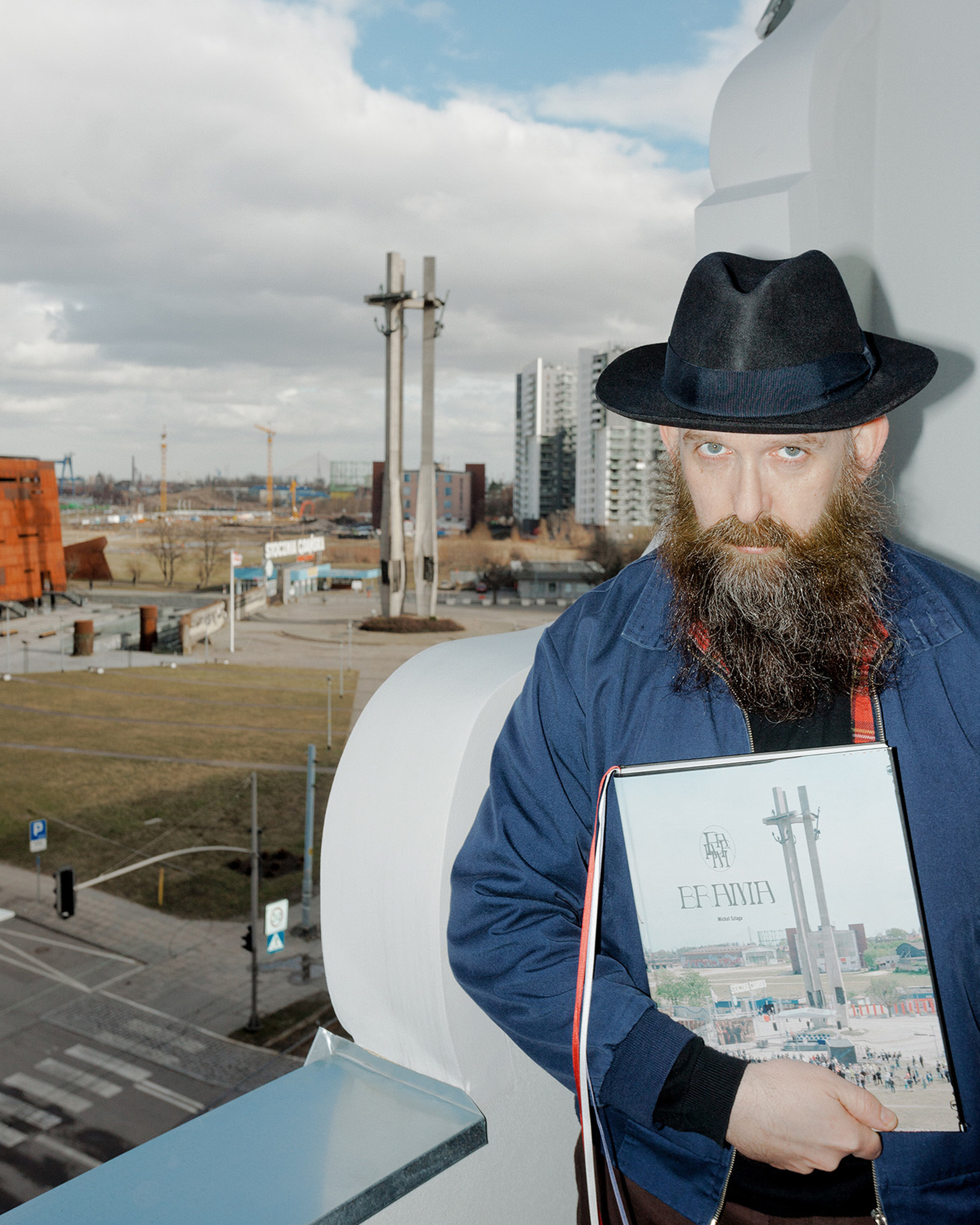
The book is also available in a set with a folder containing signed prints with dimensions of 214 x 325 mm. The GATE series consists of over 1,200 photographs taken in the years 2000-2014. Each folder contains a different - unique set of 3 or 7 photographs, selected by the author.
- Book (english edition)
- Book (polish edition)
- Book + 1 photograph
- Book + 3 photographs
- Book + 7 photographs
Information about the author available here.

